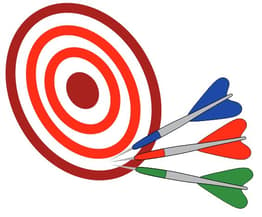Accuracy and Precision of Instruments
Accuracy and Precision of Instruments: Overview
In this topic, we will learn the accuracy and precision of instruments while measuring the different quantities. It also gives examples based on the concept for a better understanding.
Important Questions on Accuracy and Precision of Instruments
Two clocks are being tested against a standard clock located in a national laboratory. At pm by the standard clock, the readings of the two clocks are:
| Clock I | Clock II | |
| Monday | ||
| Tuesday | ||
| Wednesday | ||
| Thursday | ||
| Friday | ||
| Saturday | ||
| Sunday |
The deviation shown by the two clocks in a week are:
What is the difference between accuracy and precision?
Which of the following measurements is most precise?
If the standard deviation of a data is . Find the variance
A spherometer does not have a zero error because the result obtained is by taking the difference between the final and initial reading.
A spherometer has three legs so that it forms an equilateral triangle. The three legs of the spherometer are used for measuring both positively and negatively curved surfaces.
What is spherometer ?
Which of the following is incorrect statement regarding selection criteria of measuring instruments ?
The extent up to which the observed value agrees to the true value of the quantity is called _____.
Define Least count of an instrument.
Higher the accuracy smaller the error of measurement.
To calculate the effective length of pendulum, we measure :-
Closeness of two or more measured values is called as
The pitch of a screw gauge is and its head scale has divisions. The least count of the screw gauge is:
A spherometer has a least count of and its head scale is divided into equal divisions. The distance between consecutive thread on the spherometer screw is:
The pitch of a screw gauge is and its head scale has divisions. The least count of the screw gauge is:

The figure given above indicates good accuracy and poor precision.
To calculate the effective length of pendulum, we measure :-
